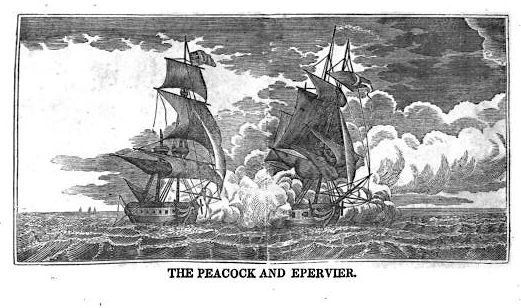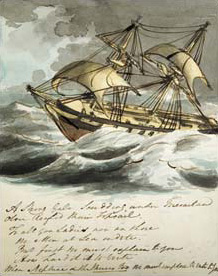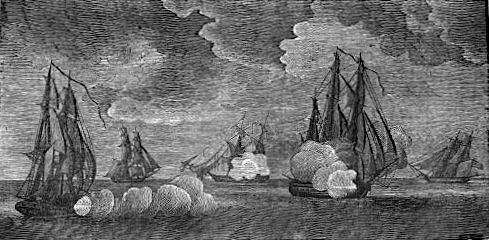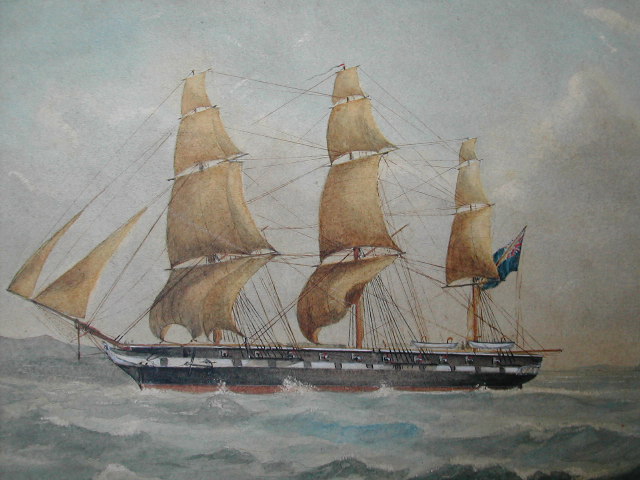Cruizer class brig-sloop on:
[Wikipedia]
[Google]
[Amazon]
The ''Cruizer'' class was an 18-gun
 During the Anglo-American
During the Anglo-American
 All subsequent vessels were brig-rigged on completion, although several were later converted to three-masted ship rig.
All subsequent vessels were brig-rigged on completion, although several were later converted to three-masted ship rig.
 The Board ordered 19 in 1802 and 1803.
The Board ordered 19 in 1802 and 1803.
 The Board ordered six vessels to this design during May 1804, all of fir. Building of fir (pine) made for speedier construction at the cost of reduced durability in service.
The Board ordered six vessels to this design during May 1804, all of fir. Building of fir (pine) made for speedier construction at the cost of reduced durability in service.
 This Board ordered 15 of the design between January 1811 and January 1812.
This Board ordered 15 of the design between January 1811 and January 1812.
 The Board ordered 20, of which only eighteen were built; two were cancelled.
The Board ordered 20, of which only eighteen were built; two were cancelled.
class
Class, Classes, or The Class may refer to:
Common uses not otherwise categorized
* Class (biology), a taxonomic rank
* Class (knowledge representation), a collection of individuals or objects
* Class (philosophy), an analytical concept used d ...
of brig-sloops of the Royal Navy
The Royal Navy (RN) is the naval warfare force of the United Kingdom. It is a component of His Majesty's Naval Service, and its officers hold their commissions from the King of the United Kingdom, King. Although warships were used by Kingdom ...
. Brig-sloops were the same as ship-sloops except for their rigging. A ship-sloop was rigged with three masts whereas a brig-sloop was rigged as a brig
A brig is a type of sailing vessel defined by its rig: two masts which are both square rig, square-rigged. Brigs originated in the second half of the 18th century and were a common type of smaller merchant vessel or warship from then until the l ...
with only a fore mast and a main mast.
The ''Cruizer'' class was the most numerous class of warships built by the British during the Napoleonic Wars
{{Infobox military conflict
, conflict = Napoleonic Wars
, partof = the French Revolutionary and Napoleonic Wars
, image = Napoleonic Wars (revision).jpg
, caption = Left to right, top to bottom:Battl ...
, with 110 vessels ordered to this design (including two completed as ship sloops, and another 3 cancelled), and the second most numerous class of sailing warship built to a single design for any navy at any time, after the smaller 10-gun s.
Of the vessels in the class, eight (8%) were lost to the enemy, either destroyed or taken. Another was taken, but retaken. Fourteen (13%) were wrecked while in British service. Lastly, four (4%) foundered while in British service. In all cases of foundering and in many cases of wrecking all the crew was lost. Many of the vessels in the class were sold, some into mercantile service (of these, one at least was wrecked, but the fate of the others is generally unknown).
Design
In December 1796, theNavy Board
The Navy Board (formerly known as the Council of the Marine or Council of the Marine Causes) was the Regulatory agency, commission responsible for the day-to-day civil administration of the Royal Navy between 1546 and 1832. The board was headqua ...
placed new orders for four flush-decked sloops, to differing designs by the two Surveyors of the Navy — Sir William Rule and Sir John Henslow. In order to compare the qualities of ship-rigged and brig-rigged vessels, one vessel to each design was to be completed as a ship-sloop and the other as a brig-sloop. While the Henslow-designed vessels (the brig-sloop and the ship-sloop ) would see no further sister ship
A sister ship is a ship of the same Ship class, class or of virtually identical design to another ship. Such vessels share a nearly identical hull and superstructure layout, similar size, and roughly comparable features and equipment. They o ...
s built, the Rule-designed vessels (the brig-sloop ''Cruizer'' and the ship-sloop ) would each have a single sister ship ordered in the following March, and Rule's ''Cruizer'' design would subsequently see 106 constructed during the Napoleonic War. The hull design was exceeding fine (narrow as compared to length), with a noted deadrise amidships and a sharp sheer, giving away the design that had origins in the smaller cutter-type designs.The Naval War of 1812, p.88
The order placed in March 1797 for the first sister ship to ''Cruizer'' was quickly amended to compete the ship ( ''Osprey'') as a ship sloop, but new orders for brig-sloops to the ''Cruizer'' design were placed from 1802 up to 1813. A final order in 1815 (HMS ''Samarang'') was cancelled in 1820.
The ''Cruizer''-class brig-sloops proved to be fast sailers and seaworthy, and the 32-pounder carronade armament gave them enormous short-range firepower, exceeding the nominal broadside of a standard 36-gun 18-pounder frigate
A frigate () is a type of warship. In different eras, the roles and capabilities of ships classified as frigates have varied.
The name frigate in the 17th to early 18th centuries was given to any full-rigged ship built for speed and maneuvera ...
. To a Royal Navy increasingly desperate for manpower, the great attraction of the design was that — thanks to the two-masted rig and the use of carronades with their small gun crews — this firepower could be delivered by a crew only a third the size of a frigate's. The Dutch built three 18 gun-brigs — ''Zwaluw'', ''Mercuur'' and ''Kemphaan'' — to a similar design; in one case apparently a copy, though without the square tuck stern. The Russian brig ''Olymp'' was also built to the same lines.
The naval historian (and novelist
A novelist is an author or writer of novels, though often novelists also write in other genres of both fiction and non-fiction. Some novelists are professional novelists, thus make a living wage, living writing novels and other fiction, while other ...
) C.S. Forester commented in relation to the smaller gun-brig
A gun-brig was a small brig-rigged warship that enjoyed popularity in the Royal Navy during the Napoleonic Wars, during which large numbers were purchased or built. In general these were vessels of under 200 tons burthen, and thus smaller than ...
s (brig-rigged vessels of under 200 tons) that
The type was a necessary one but represented the inevitable unsatisfactory compromise when a vessel has to be designed to fight, to be seaworthy and to have a long endurance, all on a minimum displacement and at minimum expense. Few men in the Royal Navy had a good word to say for the gun-brigs, which rolled terribly and were greatly over-crowded, but they had to be employed.Later in the same book he was more complimentary as regards the larger brigs such as the ''Cruizer'' class . Perhaps the most salient aspect of his statement is that the ''Cruizer'' class and its smaller sister class, the ''Cherokee'' class, highlight the huge expansion of the Royal Navy. Whatever else one may say of the class, the ''Cruizer''-class brig-sloops were both fast and provided serious firepower for minimal crewing, characteristics that appealed to a Navy suffering serious and ever increasing staffing shortages. The class proved to be ideal for many of the shallow water commitments in the Baltic and Ionian Seas, as well as around Danish waters.
Manning
Prior to 1808, the complement of officers, men, and boys for a ''Cruizer''-class brig-sloop included 15Royal Marines
The Royal Marines provide the United Kingdom's amphibious warfare, amphibious special operations capable commando force, one of the :Fighting Arms of the Royal Navy, five fighting arms of the Royal Navy, a Company (military unit), company str ...
. After 1808, the vessels carried 20 marines comprising 1 sergeant, 1 corporal and 18 privates (the marine contingent on unrated vessels did not include a commissioned officer).
Service in the War of 1812
 During the Anglo-American
During the Anglo-American War of 1812
The War of 1812 was fought by the United States and its allies against the United Kingdom of Great Britain and Ireland, United Kingdom and its allies in North America. It began when the United States United States declaration of war on the Uni ...
, several ships of the class fell victim to larger American ship-rigged sloops of war of nominally the same class. The American vessels enjoyed an advantage in weight of broadside
A broadside is the side of a ship, or more specifically the battery of cannon on one side of a warship or their coordinated fire in naval warfare, or a measurement of a warship's maximum simultaneous firepower which can be delivered upon a singl ...
and number of crew.The Naval War of 1812, p.90 The ship-rigged sloops enjoyed the ability to back sail, and their rigging proved more resistant to damage; by contrast, a single hit to the brig-sloop's rig could render it unmanageable. In many cases, however, the American advantage was in the quality of their crews, as the American sloops generally had hand-picked volunteer crews, while the brigs belonging to the overstretched Royal Navy had to make do with crews of limited numbers. During a battle with the equivalently armed and crewed American brig , HMS ''Penguin'' was unable to land a single shot from her cannons, with the only American losses being inflicted by Royal Marines
The Royal Marines provide the United Kingdom's amphibious warfare, amphibious special operations capable commando force, one of the :Fighting Arms of the Royal Navy, five fighting arms of the Royal Navy, a Company (military unit), company str ...
aboard the British ship.
The comparison was made in the London press unfavorably and was not entirely fair. The American ship-rigged sloops were bigger vessels, averaging just over 500 tons (bm); the'' Cruizer''-class vessels were not quite 400 tons (bm). The crew sizes were disproportionate at 175 to 120, and at least some of the ''Cruizer'' class in these combats were outfitted with 24-pounder carronades vice the normal 32-pounders. The rigging was often the deciding factor as the combat between USS ''Peacock'' and HMS ''Epervier'' would highlight. When HMS ''Epervier'' lost her main topmast and had her foremast damaged she was disabled. USS ''Wasp'', in another combat, would retain control despite the loss of her gaff, main topmast, and the mizzen topgallant. USS ''Wasp'' versus HMS ''Avon'' provided another example. Despite being fought gallantly, ''Avon'' was crippled by loss of a gaff. She then lost her main mast, which loss rendered her immobile. The vessels, built in 1813–1814, were intended as an answer to the American ship-rigged sloops.The Naval War of 1812, p.85.
Vessels
The following table lists the ''Cruizer''-class brig-sloops (and the two ''Snake''-class ship-sloops, which were identical apart from carrying a three-masted ship rig) according to the date on which the Admiralty ordered them. All subsequent vessels were brig-rigged on completion, although several were later converted to three-masted ship rig.
All subsequent vessels were brig-rigged on completion, although several were later converted to three-masted ship rig.
St Vincent's Board
 The Board ordered 19 in 1802 and 1803.
The Board ordered 19 in 1802 and 1803.
Melville's First Board
 The Board ordered six vessels to this design during May 1804, all of fir. Building of fir (pine) made for speedier construction at the cost of reduced durability in service.
The Board ordered six vessels to this design during May 1804, all of fir. Building of fir (pine) made for speedier construction at the cost of reduced durability in service.
Barham's Board
The Board ordered 22 vessels to this design, seventeen of which were launched in 1806 and five in 1807.Grenville's Board
The Board ordered ten vessels to this design – all on 1 October 1806, nine of which were launched in 1807 and one in 1808.Mulgrave's Board
This Board ordered 14 vessels to this design during 1807 and 1808.Charles Yorke's Board
 This Board ordered 15 of the design between January 1811 and January 1812.
This Board ordered 15 of the design between January 1811 and January 1812.
Melville's Second Board
See also
* Bibliography of early American naval historyCitations
References
* * * Clowes, William Laird, ''et al.'' (1897–1903) ''The royal navy : a history from the earliest times to the present''. (London: S. Low, Marston and Co.) Vol. 6. * * * *Further reading
* Petrejus, E W (1970). ''Modelling the brig-of-war Irene'' (A handbook for building a ''Cruizer''-class model). De Esch. ASIN B0006C7NRA. 'Irene'' was originally HMS ''Grasshopper''. The Dutch renamed her ''Irene'' after they captured her.External links
* {{DEFAULTSORT:Cruizer Class Brig-Sloop Sloop classes